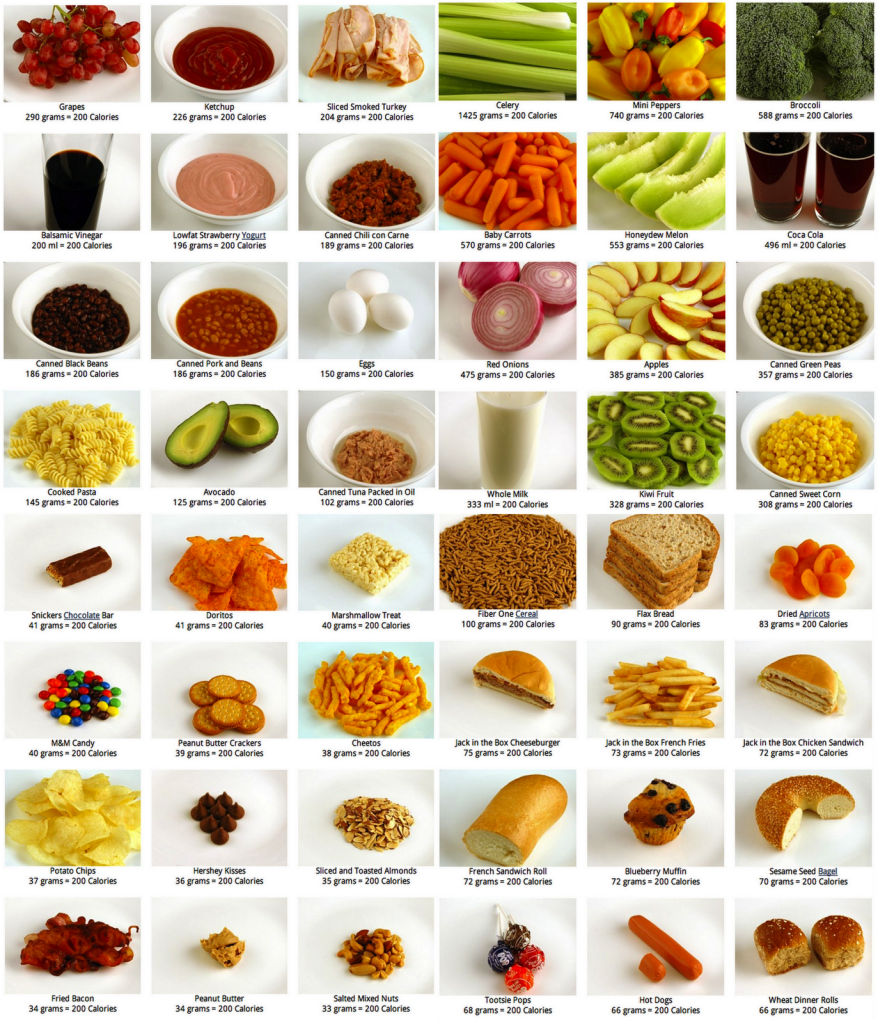Has anyone ever told you that you were dense?
Normally, that’s something of an insult. But when talking about the quality of our diet, density can play a critical role… if we are talking about nutrient density.
Nutrient density relates to how much you get of one thing, relative to something else. For food, we want to make choices that provide a lot of vitamins/minerals/fiber/antioxidants for relatively few calories (if possible).
In other words, nutrient density means how many nutrients you get from a food, given the number of calories it contains. Another popular diet term that you sometimes see related to nutrient density is volumetrics. In a nutshell, (assuming calories are equal), the greater the volume of a food, often the more effective from a weight control perspective.
To get an idea of what this looks like in practice, take a look at the image below. All those photos represent 200 kcal worth of food..
Amazing isn’t it?
You can eat 2/3 of a Snickers bar for 200 kcal… or you can try to wolf down 7 cups of broccoli.
Care to take a guess which serving of 200 kcal is going to work best for helping you manage your weight long-term?
Without delving into the intricacies of endocrinology & neural control, just appreciate that much of our hunger is controlled by how much food is actually in our bellies. In general, it takes about 20 minutes after you first start eating, for your brain to sense that your stomach has been filled with food.
If we know that most humans have about 20 minutes before they get the signal to stop eating, then it’s easy to see why basing your diet around vegetables is so effective. Vegetables take up a lot of space (high fibre & water content), come packed with micronutrients and provide relatively few calories.
The field of nutrition has very few absolutes, but everyone agrees that eating more vegetables is a key component of long-term success!

